In the beginning of September, ten thousands of people travel to Kassel in the center of Germany to take part in the convention Connichi. It is the largest non-profit organized Japan related event, counting 27’000 visitors last year. It takes place for over ten years in Kassel now and it is the fourth time for me attending it.
This year, most of the organizing team has changed which brought about many small changes. I assume this year is just a transition and any big changes will likely be implemented starting from next year.
As always, I am covering my personal experience of the event. Since I could attend only for two days, there were many areas I did not have time to experience and therefore have not covered here. Still, the event offered a wide variety of program points that offers something for everyone.
Friday
Because of work I could not attend most of Friday, but I managed to get at least a glimpse of the outdoor area after I arrived at 9 pm. Unlike many other related events, Connichi is opened until late into the night. The Matsuri, now outside in a larger area, improved a lot and thanks to some decoration and the Yukata rental booth it gave an authentic experience of a Japanese summer festival. Besides food stalls there were several opportunities to try out typical games such as (plastic) carp fishing.
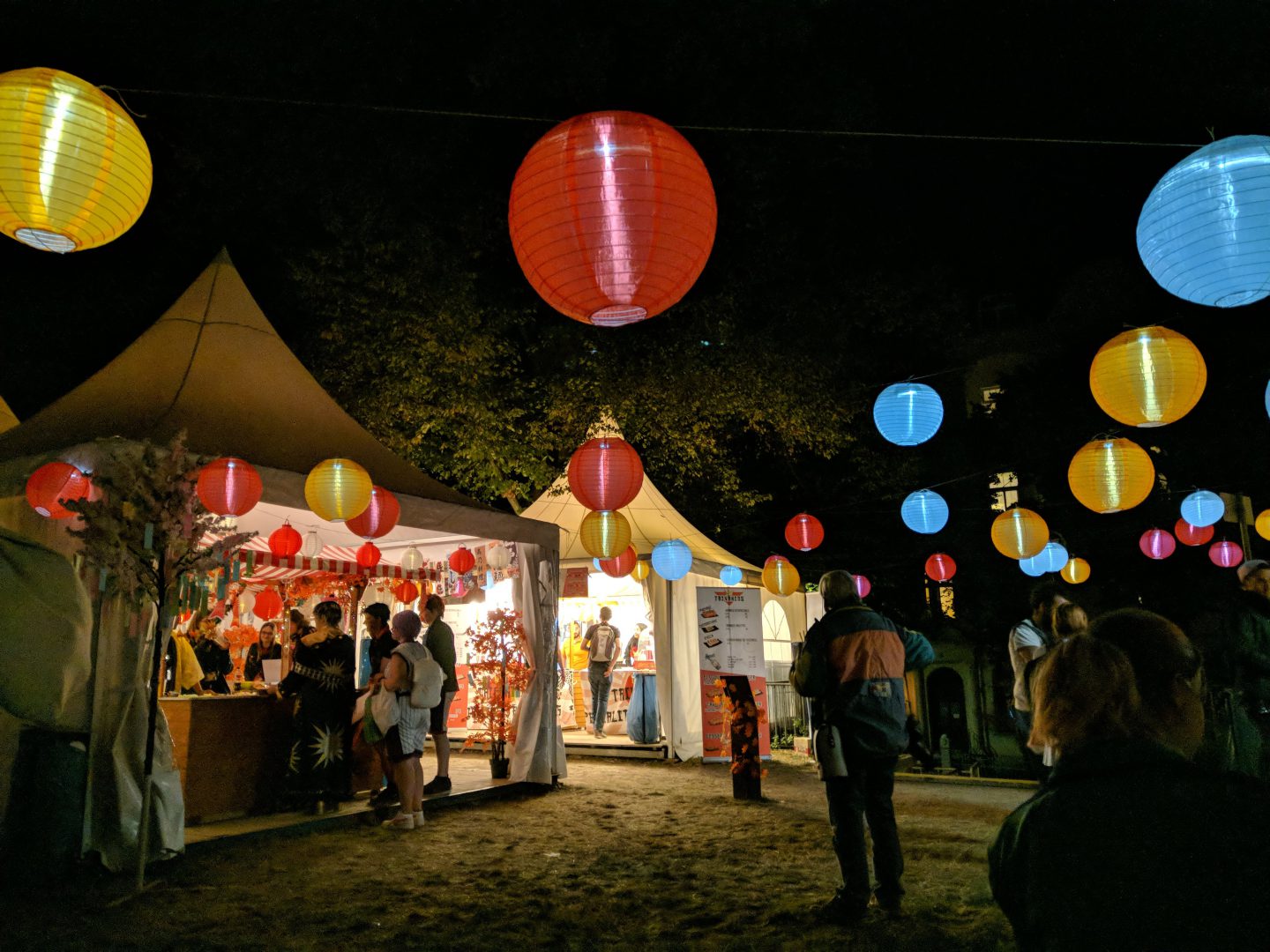
Saturday
Most of the day I spent inside, due to the extensive programming. But as the crowds tell every year, there are also many who don’t buy a ticket but use the outdoor areas exclusively.
Yui Horie Panel
The announcement of one guest of honor surprised many, including me, as famous voice actress and singer Yui Horie rarely attends fan events. Yet, she followed the invitation to come to Germany and gave a Q&A panel and two signing sessions. Some die-hard fans from Japan followed her all the way see her eye-to-eye which is a rare event, I heard.
The panel was opened with a commercial of the game Showmaker, in which the player can orchestrate a musical performance of their own vision. The character Miss Monochrome is prominently featured within, who is voiced by Yui and serves as a guest character during her concerts.
Yui Horie greeted the audience in German and introduced herself as a 17-year-old girl, a trademark of her. From that point on she was interpreted by Jasmin Dose who did a splendid job conveying the messages and emotions on both sides. Actually, she visited Germany before for the Christmas Markets, but witnessed Summer for the first time. It was surprisingly cold (compared to Japan) so she had to resort to buy additional clothes at H&M.
An extensive question and answer session followed, with Yui answering questions from both the MC and the audience. To her, both the synchronization of original anime and dubbing of foreign films have their perks and challenges. In the former case it can be hard to imagine the character’s motives but it also offers to be more creative. In the case of dubbing, matching the length of the original line can be hard and while hearing the original dub on one ear it can be daunting to repeat a common phrase that is used in any language (“hello” vs. “konnichiwa”).
An outstanding moment for her was when a character she voiced revealed their true nature, turning from a kind into a sinister person. From that point she had to match her voice accordingly, without losing the connection to the character. She followed up with a “kihihihihi” sound which she insisted had to be “interpreted”, causing much laughter.
Another question from the audience was whether she ever thought about quitting, upon she replied “every time”. There were many nice places to live, like Kassel, but her job requires her to live in Tokyo which can be a struggle. Since she loves her job she cannot quit after all but will draw new inspiration from this trip abroad.
How does a dubbing session normally proceed? All the voice actors are in one room taking turns and saying their lines in real time. Only in the case of games or narrations they are alone in the studio.
A fan asked how one can stay 17 forever. Her reply was when posting to Instagram “use Photoshop”.
As you can imagine from such comments, she was very cheerful and laid back.
Yui always wanted to be part of an song unit – quite the norm for newcomers – but she knows this also comes with a lot of additional responsibilities, such as promotional events and concerts.
There were several requests for reenacting famous lines, such as Maria from Umineko, Hanekawa from Bakemonogatari, Ayu from Kanon and Cutie Honey. In all cases she made Jasmin repeat it.
The questions kept on coming but the time was limited. Soon after there was the chance to meet her at the signing session.
The Connichi couch is a concept introduced a few years back which is quite innovative and inclusive in my opinion. Unlike a talk this format features discussion rounds between multiple “experts” about a topic that is broadcasted to the local audience and to the internet for everyone to follow.
One panel I attended was about anime adaptions of games and the discussion revolved around, whether such adaptions are just produced for promotion or whether they can shine above their original.
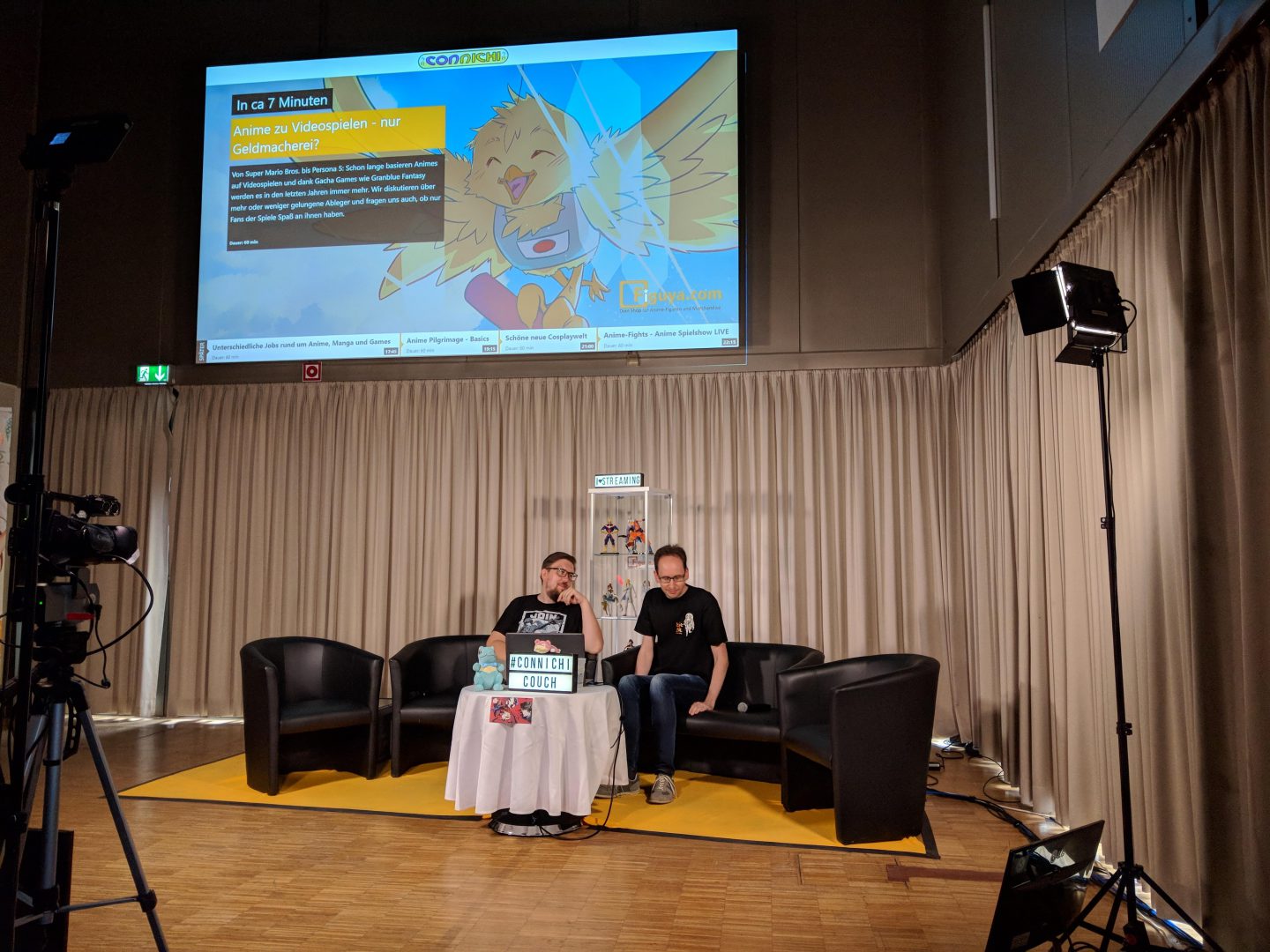
In the evening the biggest hall of the building was filled to the last seat. This should come to no surprise, as the iconic band FLOW gave their first concert in Europe. The band consisting of five members played all the fan favorites, including songs used in Naruto and Dragon Ball.
The crowd warmed up after a few songs and many brought their pen lights often used during concerts in Japan. The vocalist Keigo went out of his way to speak several German sentences with pretty decent pronunciation upon which the audience applauded in excitement.
Afterwards I joined the Connichi Couch again to listen in to the topic of Anime Pilgrimage. In the panel several friends of mine told stories from their recent travels in Japan with a focus on visiting places featured in pop culture media such as anime. The ultimate goal is to discover the exact location and angle used as reference and maybe reenact a scene. Besides anecdotes, the described places featured explanations how to access them and what kind of time budget needs to be allocated. One example is nicely illustrated on the website of two of the speakers.
As it became dark, I took some time to explore the Matsuri area again. During that time a short fireworks display lightened up the mood of the spectators and after that I tried some of the culinary offerings, the Okonomiyaki and some Ramen.
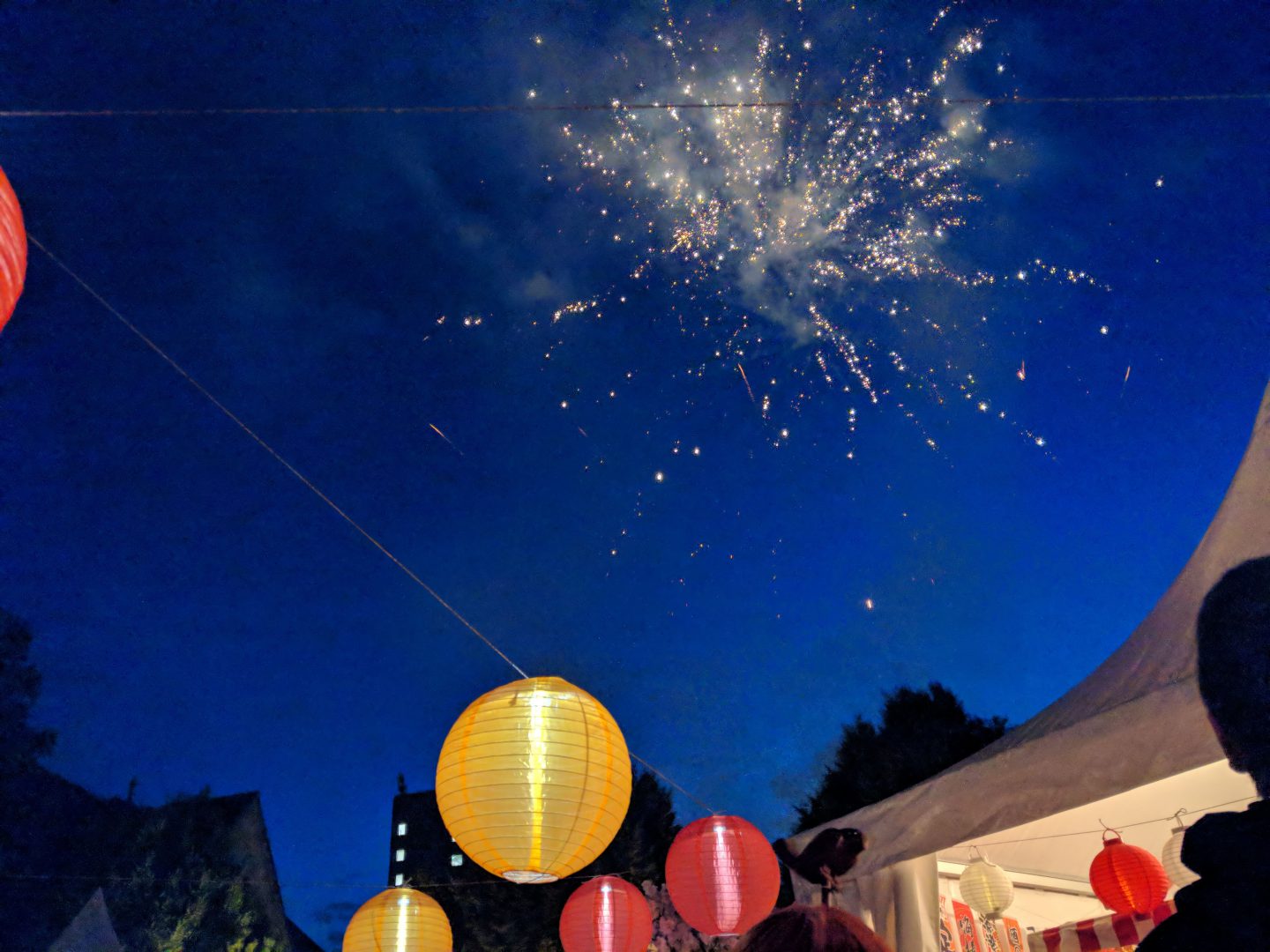
Now I was prepared to wait in line for the last event of the day, the AMV competition, which is another highlight for many visitors. As expected, arriving early is crucial as all seats were taken within minutes. This year 30 contestant anime music videos were shown which were then judged by a jury and the audience. Two winners for this contest were from the US and did not attend the ceremony – understandingly – but the third place went to a German producer.
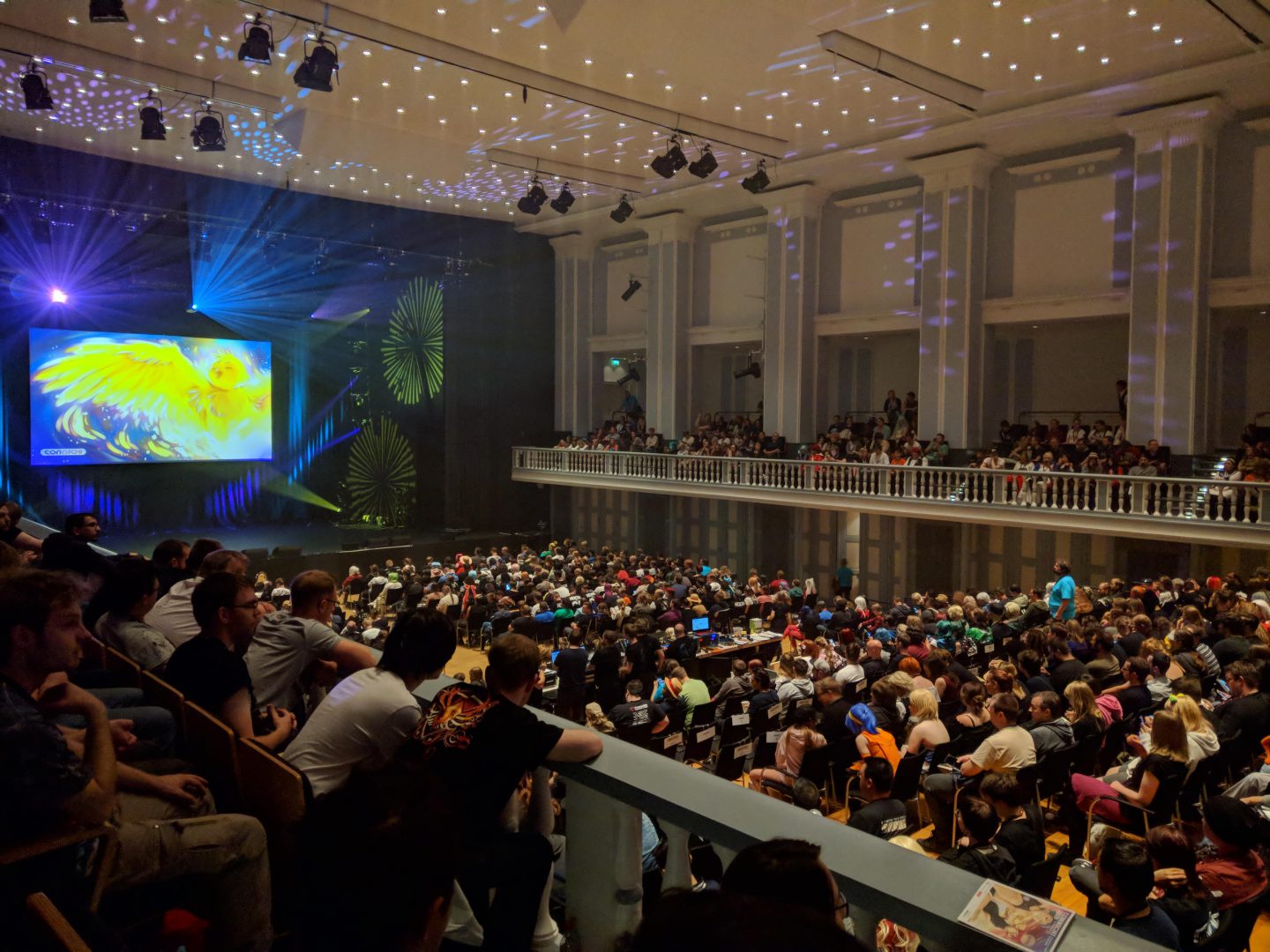
After the competition we left for our accommodation around midnight to be well rested for the last day.
Sunday
The last day was also filled with interesting program points, to a point I had a hard time deciding between two parallel events. First, script writer Taku Kishimoto gave a fascinating workshop about his approach to writing a compelling film script using the three-act structure.
Taku Kishimoto Panel
Kishimoto expressed his surprise that the panel was so well visited, although not many came on Friday. He then proceeded to explain the concept of the three-act structure he uses when composing a script.
In Japan this concept is not well known, however it is often used in Hollywood is also well known in German theater plays.
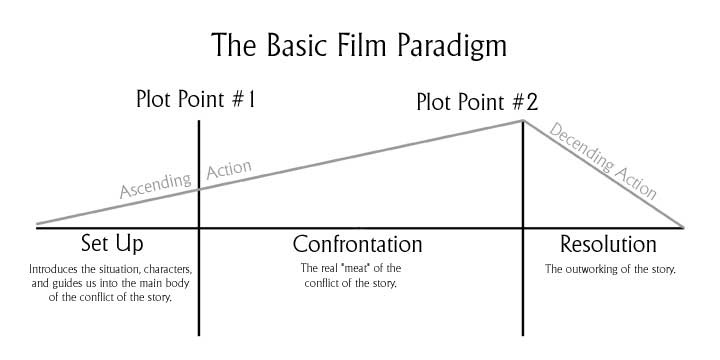
The first act, spanning about 25-30 minutes in a theatrical film, serves the exposition. Here, the characters and their aims are explained. If the first act exceeds 30 minutes, the audience becomes bored and loses the connection with the protagonist.
At the end of the first act comes the first plot point, a major event that causes progression of the narrative. The second act describes the majority of the story, including the measures the characters have to take to reach their aims.
Plot point two is where an important decision is made that influences the outcome of the story. To example, the protagonist has to decide whether to change to follow his ambitions or stay in his previous life.
The third act then tells the outcome and the conclusion. A poor script is predictable, so he recommends to hide the structure by unexpected turns.
His explanations were very detailed and easy to follow. Further, he gave several examples to illustrate his point. In the end of the talk he explained how he scripted a Haikyuu episode for the anime production using the above-explained technique.
There was time for a short Q&A session, but given time constraints, only two questions could be answered. A visitor asked how he handled the anime adaption of the manga boku dake ga inai machi (eng. ERASED). One important point was the length. To fit into 12 episodes, he decided to cut out about one third of the first volume. Having watched the anime only, I did not notice any inconsistencies because of that. Secondly, the manga had not concluded while production, so an original ending had to be created. Kishimoto did not want to decide the ending on his own, so he discussed it in a meeting with the whole production team — but with one caveat: only those who introduced an idea could participate in the discussion.
Right afterwards, FLOW hosted a Q&A panel that was quite enjoyable for the audience. Interpreter Jasmin Dose did a great job to bring across the messages of the fans.
Another section offered at Connichi since last year is the section of Japanology research. Here, scholars are invited to talk about their ongoing research about Japan.
I attended a talk entitled “Cool Inaka” which was about Japanese rural areas and their demographic change. Further, the two speakers from the university of Vienna highlighted the portrayal of the rural lifestyle in pop culture media such as manga Barakamon and anime Hanasaku Iroha. Every work discussed tried to convey a different message, ranging from encouraging to move back to rural areas to disappointment found after moving there from the city. One particular example featured the small town Yunosagi in Ishikawa prefecture. There, a new festival was created based on a fictional festival featured in an anime that was set in the area. This measure boosted local tourism and is therefore one way to bring life back into rural landscapes.
And that was unfortunately already the end of this event for me. While program still extended until the late afternoon, I had to catch a train to Switzerland, which ended up being severly delayed, but that is a story for another day.
To conclude, this year’s Connichi was especially strong and I am looking forward to next year’s edition already, given the high bar it set this time.